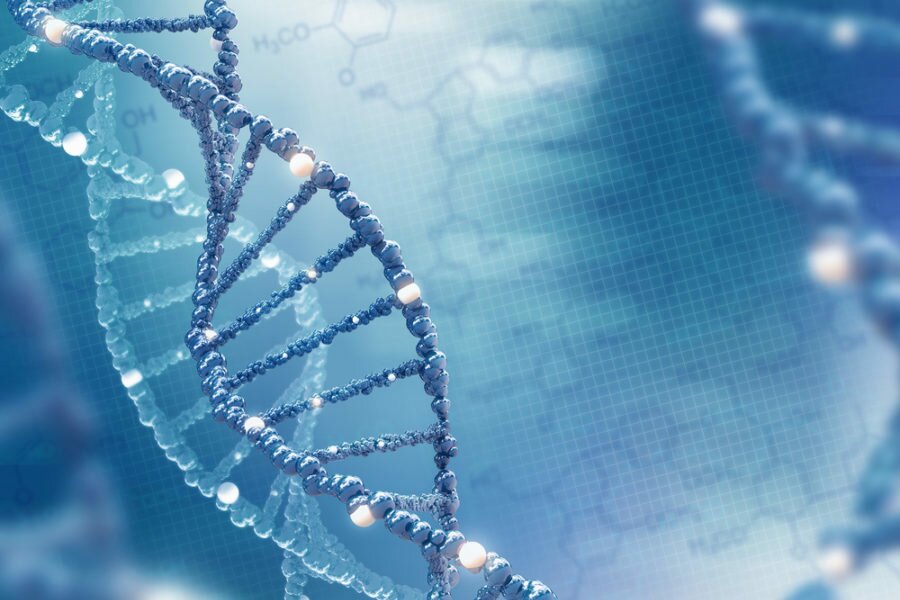If you are interested in learning about your family history, genealogy and genetic heritage, then you will most likely come across the term genetic distance. This is a common phrase that is used when examining DNA results, family trees or genetic matches.
When you send a DNA test back to a popular genealogy or family tree website, the results may be confusing. With so many columns, ancestors, groups and information, it can be hard to comprehend what it all means.
One of the most common phrases that can confuse some DNA test users is the term genetic distance. You may find yourself looking at a set of results or ancestors and wondering what that small number is next to them. This is the genetic distance result.

What does genetic distance mean?
Genetic distance in the most basic sense of the phrase, is the measurement of the genetic difference between species, people or populations. The term genetic distance refers to the distance between two sets of results.
For example, if there is a genetic distance of zero between two subjects, then it is easy to say that there are no differences between the two genetically.
Therefore, the genetic distance can be the number of mutations that are different between your results and with another match. In short, this is the number of mismatches or differences between your DNA and another person’s.
It is fair to say that the lower the number, the more closely related or similar your DNA is.
Why measure genetic distance?
Genetic distance can help to measure the difference and divergence between species or populations over time. This can either mean that the genetic distance is measured by history or the amount of time passing, or through the degree of differentiation from a common ancestor.
We measure genetic distance through the variations of alleles and characteristics found in our genes. Genetic distance can therefore be very useful for reconstructing the history and movement of populations. It can also indicate the divergence in genes and at what point in time this happened.
For instance, genetic distance has shown us that Sub Saharan African and Eurasian people began to diverge genetically around 100,000 years ago. In this sense, genetic distance can also help us understand the origins of genetic differences, alleles and the construction of biodiversity.
What is an allele?
An allele is the gene that determines different hereditary traits and characteristics such as eye color and hair color. Populations with many similar genetic traits or alleles have very small genetic distances, because there are few variations or differences.
This can indicate that they are more closely related than other populations, or that they share a more recent common ancestor together.

How does genetic distance show biodiversity?
Biodiversity is the combination of the words biological and diversity. This refers to the variety of life and organisms found on our planet, Earth. More biodiversity means that there are more variations in life and living creatures in our ecosystem.
Each living organism has a vital role to play in our world, and work together to maintain the balance of our ecosystem and support life on Earth.
With a large variety of biodiversity, we can have greater variations in nature, and help support the ecosystem. Similarly, we can then protect certain species with desirable genetic traits by examining the genetic difference and distance between them.
For instance, the genetic distances between various different breeds of domesticated animals such as dogs, can be examined and investigated in order to understand which breeds must be protected and recreated to maintain genetic diversity.
How do we measure genetic distance?
The most common way that scientists measure genetic distance is through Nei’s Distance measuring model. This was developed in 1972 by Masatoshi Nei, and was called the standard genetic distance.
This was measured by having an expected value which is proportional to evolutionary factors such as time, when both the effects of divergence, mutation and genetic drift are accounted for.
This is why we now know that the genetic distance between humans and chimpanzees is so small. As genetic distance measures the differences or the shared traits between two sets of species or between two DNA results, we can tell the similarities in genealogy and attributes.
It may surprise you to know that through the study of genetic distance, human DNA only differs from chimpanzees by about 1.2%. Our similar traits, make up, physical attributes and shared alleles therefore means that we may share the same common ancestor or origin, many many years ago.
By looking at the data that genetic distance represents, we can determine that humans share around 99% of our DNA with chimpanzees, which makes them our closest living relatives.
Genetic distance is generally determined by the number of variations in the markers in our DNA. This can help determine the relatedness of two subjects.
This is measured through the study of our markers. For instance, if you compare two sets of DNA results, and one matches 36 out of 37 of the other DNA’s markers, then the genetic distance would be 1.
With this in mind, it is clear to see how DNA testing companies such as Ancestry, LivingDNA and many others can determine relative and ancestral connections across the world through the results of genetic distance.
The genetic distance can therefore tell you that you have 1, or 2 varying genomes with another person, which may result in them being more closely related to you than you once thought.
When the calculated genetic distance is 0, you have a genetic match. This means that there are no mutations or differences between two sets of DNA data, and the results completely match each other.

How do I find out my own genetic distance?
If you are wondering how you can genetically measure your DNA and find matches to you, then there are so many options to help you find results.
You can use online tools such as Ancestry, 23AndMe, MyHeritage or FamilyTreeDNA to find similarities between genes and search for long lost ancestors.
To search for your heritage, you will love MyHeritage.
You can also use one of the world’s largest ancestral databases to find genetic matches with Ancestry.
With tools such as these, you can find out more about how to see your genetic distance with relatives and trace your ancestral history. To find really conclusive results, you will have to take a DNA test to uncover similarities in traits and genomes.
Our favorite and most accurate DNA tests are the Ancestry DNA and Traits Genetic Test.
This test can help you find your specific DNA and traits which will show you your own alleles and how they have affected your eye color, hair color and physical appearance. With precise ethnicity and connections to living relatives, you can find the genetic distance between you and your matches!
Similarly, you can find your genetic traits with 23AndMe.
This testing kit will uncover your ancestry across 2000+ regions so that you can find matches and compare the genetic distance between your results.
What is great about 23andMe is that you may uncover genes, predispositions and attributes that you may be carrying, whether this is particular eye colors or health conditions. This can be very beneficial to the understanding of your genetic make-up.
If you want to try finding genetic matches and relatives through the study of genetic distance, then you will love the MyHeritage DNA testing kit.
Similarly, you can try FamilyTree DNA’s Family Finder kit, to uncover your closest genetic relatives and receive a percentage of personalized DNA origins. With this, you can find your genetic information, difference and distance between your results and thousands online.
Conclusion
When studying your DNA test results, you may see the term genetic distance.
Genetic distance, in short terms is the phrase used to define the number of variations, differences and mutations between two sets of DNA results. These can either be Y-chromosome DNA results or mitochondrial DNA test results.
Therefore, a very low, or a genetic distance of zero would mean that there are little to no differences in the results, and each is exactly matched with the other. This is called a DNA match.
